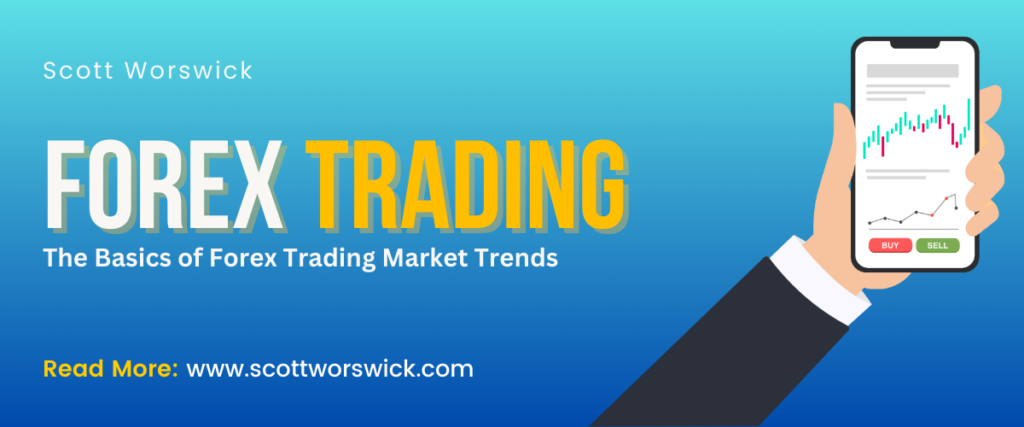The world of forex trading is a vast and dynamic landscape, where currency values fluctuate continuously based on a myriad of factors. As the largest financial market globally, with daily trading volumes exceeding $6 trillion, the forex market offers immense opportunities for profit. However, to navigate this complex environment successfully, traders must develop a deep understanding of market trends. Recognizing and interpreting these trends is crucial, as they provide valuable insights into potential future price movements and help traders make informed decisions.
Market trends in forex trading can be influenced by various elements, including economic indicators, geopolitical events, and market sentiment. Identifying whether a currency pair is in an uptrend, downtrend, or sideways trend is fundamental to crafting effective trading strategies. By leveraging technical, fundamental, and sentiment analysis, traders can gain a comprehensive view of market dynamics. This holistic approach not only enhances their ability to predict trends but also aids in identifying optimal entry and exit points for trades.
In this article, we delve into the key insights necessary for understanding forex trading market trends. We explore the tools and techniques used in technical analysis to identify trends, examine the impact of economic indicators through fundamental analysis, and discuss the importance of sentiment analysis in gauging market psychology. By integrating these approaches, traders can develop robust strategies that maximize their chances of success in the fast-paced and ever-evolving forex market.
Table of Contents
The Basics of Forex Trading Market Trends
Understanding the basics of forex trading market trends is essential for any trader aiming to succeed in the forex market. Market trends refer to the general direction in which a currency pair is moving over a certain period. These trends can be broadly categorized into three types: uptrends, downtrends, and sideways trends. An uptrend is characterized by a series of higher highs and higher lows, indicating that the currency pair’s value is increasing. Conversely, a downtrend consists of lower highs and lower lows, signifying a decline in the currency pair’s value. Sideways trends, where the currency pair moves within a range without a clear direction, reflect market indecision or consolidation.
To identify and capitalize on these trends, traders often rely on various tools and techniques within technical analysis. Moving averages, for instance, are commonly used to smooth out price data and reveal the direction of the trend more clearly. Simple moving averages (SMA) and exponential moving averages (EMA) help traders spot trend reversals and determine potential entry and exit points. Another vital tool is the trend line, which connects a series of highs or lows to form a visual representation of the trend direction. By drawing trend lines on a price chart, traders can quickly ascertain whether the market is trending upward, downward, or sideways, thus aiding in their decision-making process.
Beyond technical indicators, understanding the nature and duration of market trends is equally important. Forex trading trends can last from a few minutes to several months, depending on the underlying factors driving them. Short-term trends are often influenced by market news and economic data releases, while long-term trends are typically driven by fundamental factors such as interest rates, inflation, and geopolitical events. By recognizing the type and timeframe of a trend, traders can tailor their strategies to suit different market conditions, enhancing their ability to predict price movements and make profitable trades. In essence, mastering the basics of forex trading market trends equips traders with the knowledge and skills necessary to navigate the complexities of the forex market effectively.
Technical Analysis: Tools for Identifying Trends
Technical analysis is a popular method used by forex traders to identify market trends. This approach involves analyzing historical price data and using various indicators to predict future movements. Key tools in technical analysis include moving averages, trend lines, and oscillators.
1. Moving Averages
Moving averages are fundamental tools in forex trading, providing a simplified view of price movements to help traders identify and confirm market trends. By calculating the average price of a currency pair over a specified period, moving averages smooth out short-term fluctuations and reveal the underlying trend direction. There are two primary types of moving averages: the Simple Moving Average (SMA), which gives equal weight to all price data points in the period, and the Exponential Moving Average (EMA), which gives more weight to recent prices, making it more responsive to new information.
Traders often use moving averages to identify trend reversals and determine strategic entry and exit points. For instance, a crossover strategy involves watching for the point where a short-term moving average crosses above or below a long-term moving average, signaling potential buy or sell opportunities. By incorporating moving averages into their analysis, traders can gain valuable insights into market trends, enhancing their ability to make informed decisions in the fast-paced world of forex trading.
2. Trend Lines
Trend lines are a fundamental component of technical analysis in forex trading, offering a visual representation of market trends by connecting a series of price points on a chart. Typically, an upward trend line is drawn by connecting the successive higher lows of a currency pair, indicating a bullish market where prices are generally increasing. Conversely, a downward trend line links the successive lower highs, signaling a bearish market with declining prices.
These lines act as dynamic support and resistance levels, guiding traders in predicting potential future price movements. When the price breaks through a trend line, it can indicate a trend reversal, presenting traders with critical buy or sell signals. By employing trend lines, traders can effectively identify the direction and strength of a trend, enhancing their ability to make strategic decisions and capitalize on market opportunities within the forex trading landscape.
3. Oscillators
Oscillators are essential tools in forex trading, providing traders with insights into market momentum and potential reversal points. These indicators fluctuate within a defined range, typically between 0 and 100, helping traders identify overbought or oversold conditions in a currency pair. Key oscillators include the Relative Strength Index (RSI) and the Moving Average Convergence Divergence (MACD).
The RSI measures the speed and change of price movements, with values above 70 indicating an overbought market and values below 30 suggesting an oversold market. The MACD, on the other hand, shows the relationship between two moving averages of a currency’s price, with its histogram and signal line providing visual cues for trend strength and potential reversals. By integrating oscillators into their analysis, traders can gain a clearer picture of market sentiment and timing, enhancing their ability to make well-informed trading decisions in the dynamic environment of forex trading.
Fundamental Analysis: Evaluating Economic Indicators
While technical analysis focuses on historical price data, fundamental analysis examines economic indicators, political events, and other external factors that influence currency values. Key economic indicators that impact forex trading include interest rates, inflation rates, and employment data.
1. Interest Rates
Interest rates play a crucial role in forex trading, influencing currency values and market trends significantly. Central banks use interest rates as a tool to regulate economic growth and inflation. Higher interest rates attract foreign capital, as investors seek better returns on their investments, thereby increasing demand for the currency and driving its value higher in the forex market. Conversely, lower interest rates make a currency less attractive for investment, potentially leading to depreciation.
Traders closely monitor central bank meetings and economic reports to gauge potential changes in interest rates, as these decisions can trigger sharp movements in currency pairs. Understanding the impact of interest rates is essential for forex traders, as it allows them to anticipate market reactions and adjust their strategies accordingly to capitalize on opportunities and mitigate risks in the ever-changing landscape of forex trading.
2. Inflation Rates
Inflation rates are critical indicators in forex trading, reflecting changes in the purchasing power of a currency and influencing market trends significantly. When inflation rises, it erodes the value of a currency, as it takes more units of that currency to purchase the same goods and services. This depreciation typically leads to lower demand for the currency in the forex market, causing its value to decline. Conversely, lower inflation rates or deflation may strengthen a currency’s value, making it more attractive to investors seeking stability.
Forex traders carefully monitor inflation reports and economic indicators such as Consumer Price Index (CPI) releases to assess the health of an economy and predict future currency movements. By understanding how inflation impacts currency values, traders can adjust their strategies accordingly, anticipating potential market trends and positioning themselves to capitalize on profitable trading opportunities in the dynamic forex market landscape.
3. Employment Data
Employment data is a crucial component of fundamental analysis in forex trading, providing valuable insights into the economic health and potential future trends of a country’s currency. Key employment indicators such as the Non-Farm Payrolls (NFP) report in the United States offer a snapshot of job creation across various sectors, indicating the overall strength of the labor market. Strong employment data, characterized by higher-than-expected job gains and declining unemployment rates, typically suggests a robust economy and may bolster the currency’s value in the forex market.
Conversely, weak employment figures could signal economic sluggishness or contraction, potentially leading to currency depreciation. Forex traders closely monitor these reports, as they can prompt significant market movements and affect trading strategies. By analyzing employment data alongside other economic indicators, traders can gain a comprehensive understanding of market trends, enabling them to make informed decisions and capitalize on opportunities in the dynamic forex trading environment.
Sentiment Analysis: Gauging Market Psychology
Sentiment analysis involves assessing the overall mood or attitude of traders towards a particular currency pair. This approach is based on the idea that market movements are not always rational and can be influenced by collective emotions. Tools for sentiment analysis include the Commitment of Traders (COT) report and sentiment indexes.
1. Commitment of Traders (COT) Report
The Commitment of Traders (COT) report is a vital tool in forex trading, offering valuable insights into the positions held by various market participants. Published weekly by regulatory bodies like the Commodity Futures Trading Commission (CFTC), the COT report categorizes traders into commercial hedgers, large speculators, and small speculators. Commercial hedgers, such as multinational corporations and financial institutions, often use the forex market to hedge against currency risks related to international trade and investments.
Large speculators, including hedge funds and institutional investors, typically take speculative positions based on their market analysis and outlook. Small speculators, consisting of retail traders, often follow trends and sentiment in their trading decisions. By analyzing the COT report, forex traders can gauge market sentiment and positioning trends among different trader groups. This insight helps traders assess potential market movements and identify trading opportunities aligned with prevailing sentiment and market dynamics, thereby enhancing their strategic approach to forex trading.
2. Sentiment Indexes
Sentiment indexes are powerful tools in forex trading, providing traders with a comprehensive view of market sentiment and psychology. These indexes aggregate data from various sources, including retail trader positioning, institutional investor sentiment, and market surveys, to gauge the prevailing sentiment towards a currency pair. For instance, a sentiment index may indicate whether traders are predominantly bullish or bearish on a particular currency.
High bullish sentiment suggests optimism and expectations of currency appreciation, while high bearish sentiment reflects pessimism and expectations of depreciation. By analyzing sentiment indexes, forex traders can gain valuable insights into market dynamics and potential future price movements. This understanding enables traders to adjust their strategies accordingly, leveraging sentiment shifts to identify trading opportunities and manage risks effectively in the dynamic and competitive forex trading environment.
Developing a Trading Strategy
To navigate the complexities of the forex trading market, traders need a well-defined strategy that incorporates technical, fundamental, and sentiment analysis. A robust trading strategy should include:
1. Risk Management
Effective risk management is fundamental to successful forex trading, encompassing strategies and techniques that protect traders from potential losses while maximizing their profitability. Key principles of risk management include setting appropriate stop-loss orders to limit downside risk on trades, diversifying portfolios across different currency pairs to spread risk, and adhering to disciplined position sizing to align with risk tolerance levels.
Traders also utilize risk-reward ratios to assess potential returns against potential losses before entering a trade, ensuring that potential profits justify the risks taken. Moreover, maintaining a balanced approach between risk and reward helps traders navigate volatile market conditions and unexpected events, such as economic data releases or geopolitical developments, which can influence currency movements. By prioritizing risk management alongside their trading strategies, forex traders can sustainably grow their capital over time, mitigate the impact of market fluctuations, and achieve consistent profitability in the dynamic forex trading environment.
2. Diversification
Diversification is a critical strategy in forex trading that involves spreading investments across different currency pairs to mitigate risk and optimize potential returns. By diversifying their portfolios, traders can reduce the impact of adverse movements in any single currency pair, as the performance of one pair may offset losses or enhance gains in another. This approach helps traders manage risk more effectively and enhances overall portfolio stability. Diversification also allows traders to capitalize on opportunities in various market conditions, such as trending markets, ranging markets, or periods of volatility.
Moreover, it enables traders to align their investments with different economic cycles and geopolitical events affecting currency movements globally. By maintaining a well-diversified portfolio, forex traders can enhance their resilience to market fluctuations, improve their risk-adjusted returns, and achieve long-term success in the competitive forex trading arena.
3. Consistency
Consistency is paramount in forex trading, emphasizing the importance of adhering to a well-defined trading plan and strategy over time. Successful traders maintain consistency in their approach by following predefined rules for entering and exiting trades, managing risk, and controlling emotions. This disciplined approach helps traders avoid impulsive decisions driven by market fluctuations or short-term emotions, ensuring that trading decisions are based on thorough analysis and strategy rather than on unpredictable factors.
Consistency also fosters accountability and improves decision-making under pressure, essential traits for navigating the dynamic and competitive forex market. By maintaining consistency in their trading practices, forex traders can build trust in their strategies, achieve sustainable growth, and capitalize on opportunities while minimizing risks in the ever-evolving forex trading landscape.
Conclusion
In conclusion, grasping the nuances of forex trading market trends is indispensable for traders seeking to excel in the dynamic world of currency exchange. By mastering technical analysis tools such as moving averages, trend lines, and oscillators, traders gain the ability to discern patterns and predict potential market movements with greater accuracy. These tools not only help in identifying trends—whether uptrends, downtrends, or sideways movements—but also aid in pinpointing optimal entry and exit points for trades, crucial for maximizing profitability and minimizing losses.
Fundamental analysis serves as another pillar of understanding forex market trends, providing insights into the broader economic factors influencing currency values. Monitoring economic indicators like interest rates, inflation rates, and employment data allows traders to gauge the strength of economies and anticipate shifts in currency prices accordingly. Moreover, sentiment analysis, encompassing tools such as sentiment indexes and the Commitment of Traders (COT) report, provides valuable glimpses into market psychology and positioning trends among traders. This understanding empowers traders to align their strategies with prevailing market sentiment, enhancing their ability to capitalize on opportunities in the forex trading landscape.
Developing a comprehensive trading strategy that integrates these insights is essential for achieving sustained success in forex trading. Emphasizing risk management practices such as setting appropriate stop-loss levels, diversifying portfolios across different currency pairs, and maintaining consistency in trading execution helps mitigate risks and optimize returns over time. By adhering to a disciplined approach and adapting strategies to evolving market conditions, traders can navigate fluctuations in forex market trends with confidence, ultimately achieving their financial objectives in this competitive and rewarding arena.







Pingback: Forex Trading: A Tool for Diversifying Investment Portfolios -